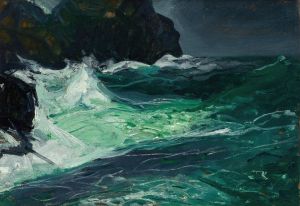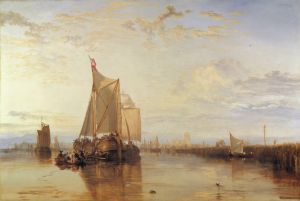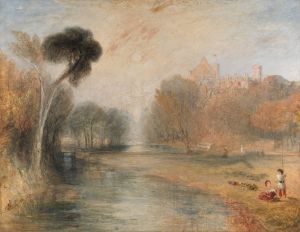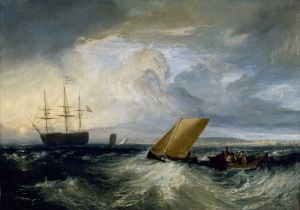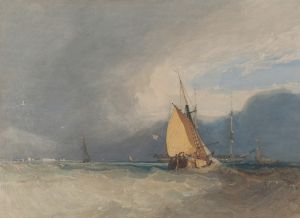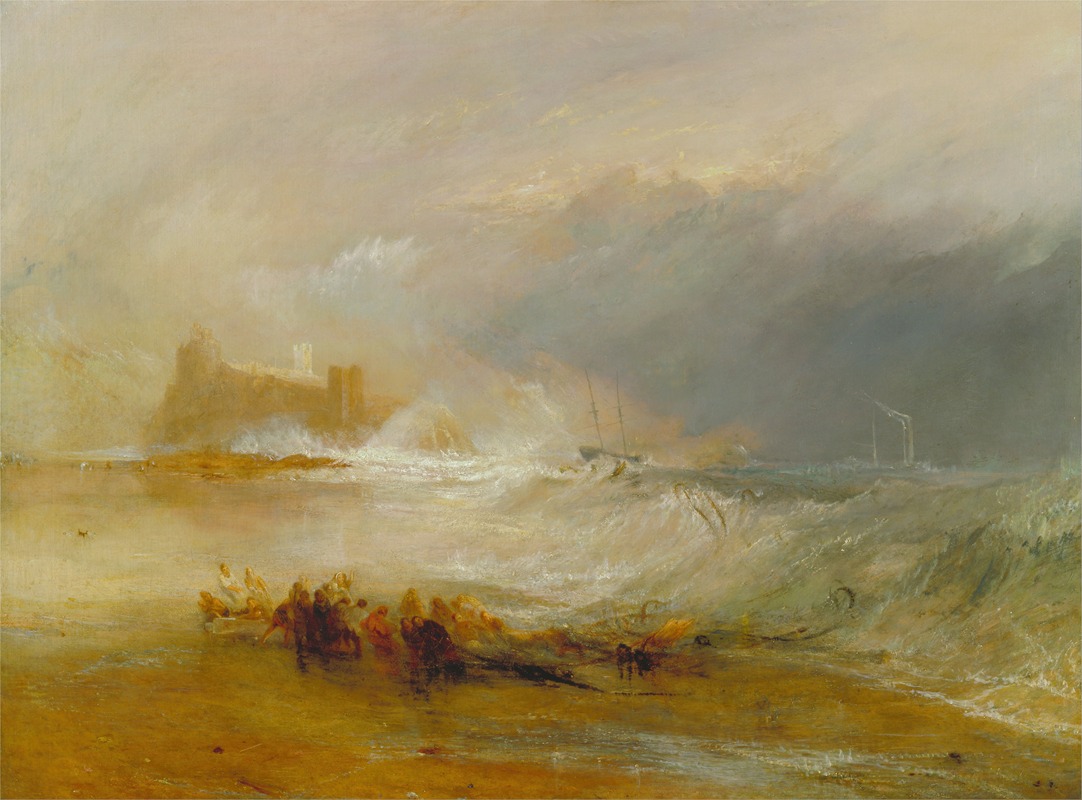
Wreckers — Coast of Northumberland, with a Steam-Boat Assisting a Ship off Shore
A hand-painted replica of Joseph Mallord William Turner’s masterpiece Wreckers — Coast of Northumberland, with a Steam-Boat Assisting a Ship off Shore, meticulously crafted by professional artists to capture the true essence of the original. Each piece is created with museum-quality canvas and rare mineral pigments, carefully painted by experienced artists with delicate brushstrokes and rich, layered colors to perfectly recreate the texture of the original artwork. Unlike machine-printed reproductions, this hand-painted version brings the painting to life, infused with the artist’s emotions and skill in every stroke. Whether for personal collection or home decoration, it instantly elevates the artistic atmosphere of any space.
"Wreckers — Coast of Northumberland, with a Steam-Boat Assisting a Ship off Shore" is a painting by the renowned British artist Joseph Mallord William Turner. Completed in 1836, this work exemplifies Turner's fascination with the dramatic interplay of natural forces and human endeavors, a theme prevalent throughout his oeuvre.
Turner, born in 1775, was a pivotal figure in the Romantic movement, known for his expressive colorization, imaginative landscapes, and turbulent marine paintings. His works often explore the sublime, capturing the awe-inspiring power of nature and its impact on human life. "Wreckers — Coast of Northumberland" is no exception, as it vividly depicts a scene of maritime peril and rescue.
The painting portrays a tumultuous seascape off the coast of Northumberland, a region in the northeast of England known for its rugged coastline and historical shipwrecks. In the foreground, a group of wreckers—individuals who salvaged goods from shipwrecks—are depicted amidst the chaos of the stormy sea. The term "wreckers" often carries a dual connotation, referring both to those who legitimately aided in rescue efforts and those who might exploit shipwrecks for personal gain.
Central to the composition is a steam-boat, a relatively novel technology at the time, assisting a ship in distress. The inclusion of the steam-boat highlights the tension between traditional and modern methods of maritime navigation and rescue. Turner's interest in contemporary technological advancements is evident here, as he contrasts the steam-boat's mechanical power with the raw force of the natural elements.
Turner's mastery of light and color is prominently displayed in this painting. The swirling clouds and churning sea are rendered in a palette of dark, moody tones, punctuated by flashes of light that suggest both the danger and hope inherent in the scene. The dynamic brushwork and dramatic contrasts create a sense of movement and urgency, drawing the viewer into the unfolding drama.
"Wreckers — Coast of Northumberland" reflects Turner's deep engagement with the themes of nature's might and human resilience. It also underscores his ability to capture the emotional intensity of a moment, making the viewer acutely aware of the precarious balance between human endeavor and the natural world.
This painting is part of the collection at the Yale Center for British Art in New Haven, Connecticut. It remains a testament to Turner's innovative spirit and his enduring influence on the landscape and maritime painting genres. Through works like this, Turner not only documented the world around him but also invited viewers to contemplate the broader implications of human interaction with nature.
In summary, "Wreckers — Coast of Northumberland, with a Steam-Boat Assisting a Ship off Shore" is a quintessential Turner painting that encapsulates the artist's fascination with the sublime and the technological advancements of his time. It stands as a powerful representation of the Romantic era's artistic exploration of nature's grandeur and humanity's place within it.





